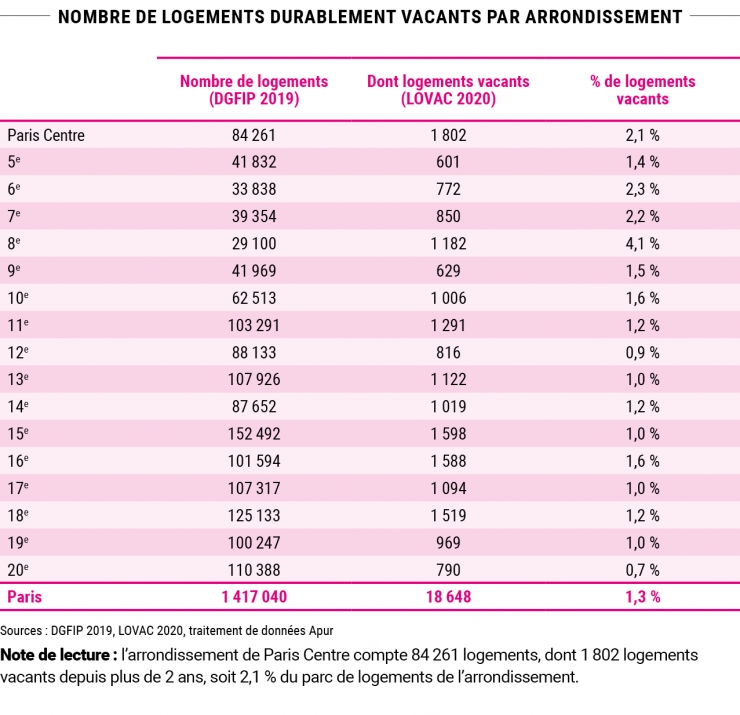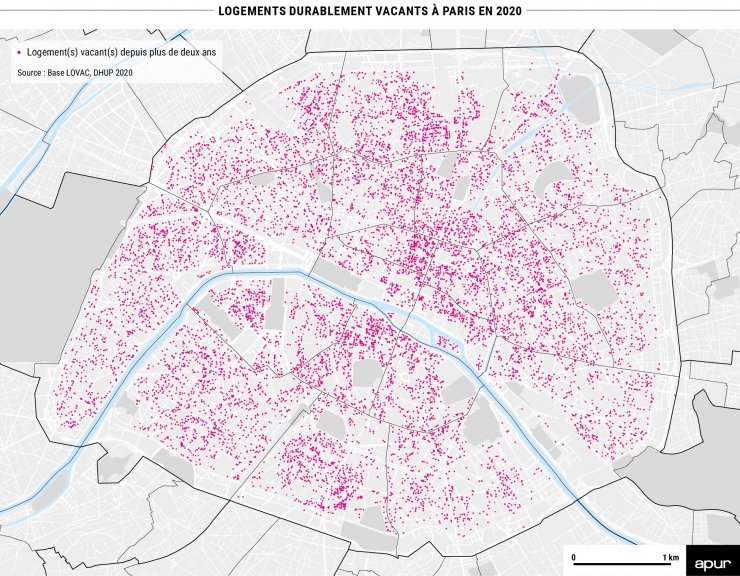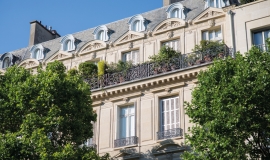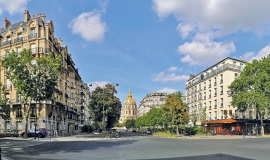
According to the “LOVAC” file, a tool made available to local authorities by the State in the context of the national plan to combat vacant housing launched a year ago, 18,648 housing units in Paris had been vacant for over 2 years at the end of 2000. The file provides precise information on the long-term vacancy situation by neutralising frictional vacancy.
In the census carried out by INSEE, vacancy covers a wider area that includes frictional vacancy, that is to say short-term vacancies linked to owners or tenants changing, as well as housing waiting for an inheritance settlement or that kept by an employer for future use by an employee, etc. The LOVAC file, resulting from the cross-referencing of two fiscal files (1767 Biscom and land registry files), deals with housing declared vacant by owners to the income tax authorities for more than two years, i.e. long-term vacancies, known as “structural” vacancies.
In a city such as Paris, where the property market is dynamic and mobility (departures and arrivals) is high, these two approaches generate significant differences in their estimations: 117,082 vacant housing units according to the census (i.e. 8.5% of the housing stock) and 18,648 vacant housing units according to the LOVAC file in 2020.
Apart from this, it should be remembered that in addition to vacant housing there are other unoccupied housing units according to INSEE denominations, i.e. housing which is not the main residency of households. These are secondary residences and seasonal rentals. Unoccupied housing represents a total of 17.4% of the Parisian housing stock.
The 18,648 long-term, vacant housing units in the LOVAC file represent 1.3% of the Parisian housing stock. Spread throughout the Parisian territory, they are over-represented in the Central Business Districts on both the right and the left banks of the Seine, in the 6th and 7th districts. The 8th district has nearly 1,200 vacant housing units, i.e. 4% of the district’s housing stock. Neighbourhoods on the outer edges of the capital, along the boulevards des Maréchaux and in the north-eastern quarter are particularly less affected by long-term vacancy compared with central areas (0.7% vacant housing in the 20th district for example).
Information is also given on the diffuse nature of vacancy within buildings. The 18,648 Parisian housing units concerned correspond to 11,197 different buildings. In 70% of cases, there is only one vacant housing unit per building (7,852 addresses) and in 23% of cases, only two or three vacant housing units per building (2,625 addresses).
The geographic location of vacancy, which is diffuse and present in all areas of Paris, is due to the fact that housing units are vacant for a wide variety of reasons. Some vacant units are small with no basic amenities and need renovation work to render them rentable, while others are in good condition and represent real estate investments which are left empty by their owners.
In a note to be published at the end of 2021, Apur will continue to analyse the characteristics of these long-term vacant housing units (surface area, number of rooms, level of comfort, etc.) and will give details on the profile of the owners concerned. This work will make it possible to accompany measures put in place by the City of Paris and the State in order to act upon structural vacancy, particularly in order to enable this property to be put on the market once again.







